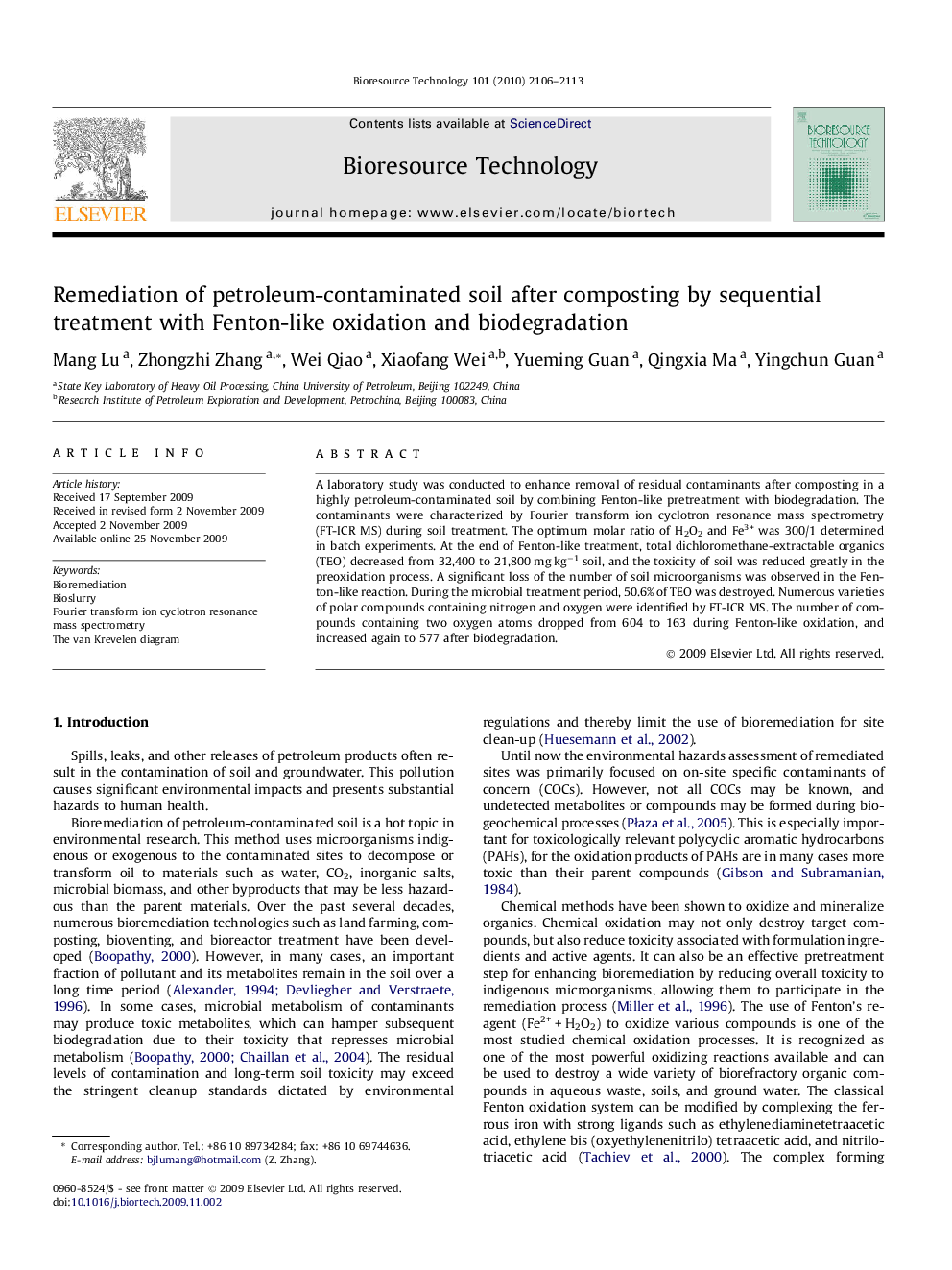| Article ID | Journal | Published Year | Pages | File Type |
|---|---|---|---|---|
| 683832 | Bioresource Technology | 2010 | 8 Pages |
A laboratory study was conducted to enhance removal of residual contaminants after composting in a highly petroleum-contaminated soil by combining Fenton-like pretreatment with biodegradation. The contaminants were characterized by Fourier transform ion cyclotron resonance mass spectrometry (FT-ICR MS) during soil treatment. The optimum molar ratio of H2O2 and Fe3+ was 300/1 determined in batch experiments. At the end of Fenton-like treatment, total dichloromethane-extractable organics (TEO) decreased from 32,400 to 21,800 mg kg−1 soil, and the toxicity of soil was reduced greatly in the preoxidation process. A significant loss of the number of soil microorganisms was observed in the Fenton-like reaction. During the microbial treatment period, 50.6% of TEO was destroyed. Numerous varieties of polar compounds containing nitrogen and oxygen were identified by FT-ICR MS. The number of compounds containing two oxygen atoms dropped from 604 to 163 during Fenton-like oxidation, and increased again to 577 after biodegradation.
